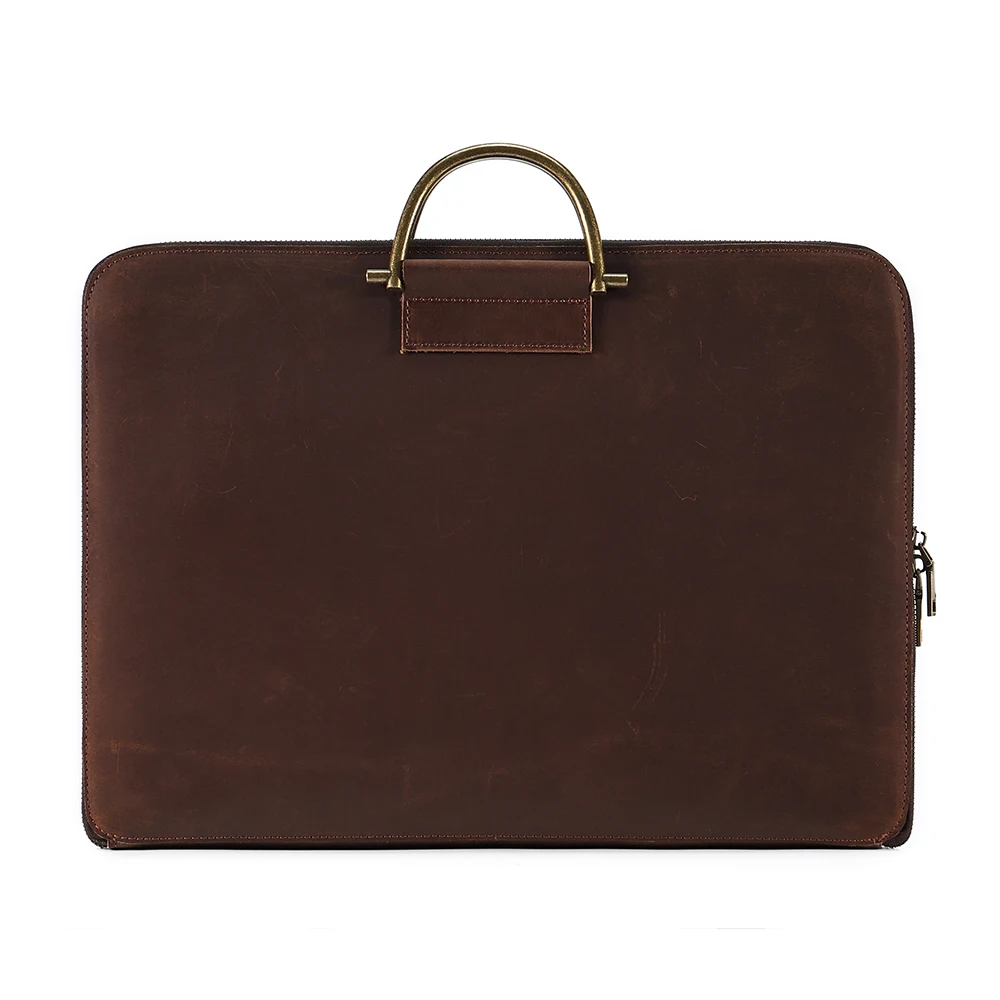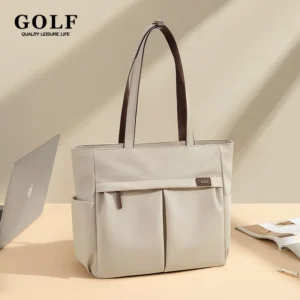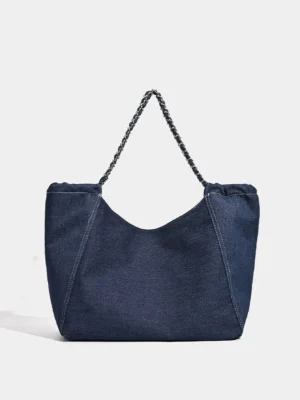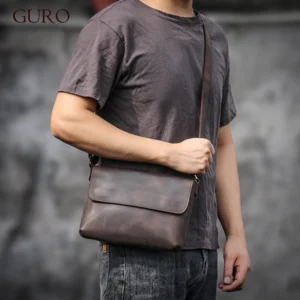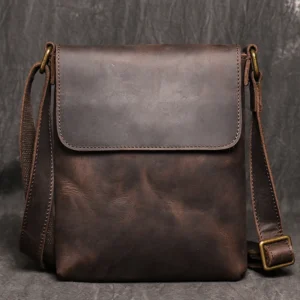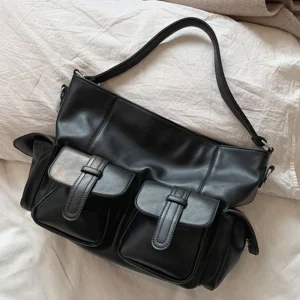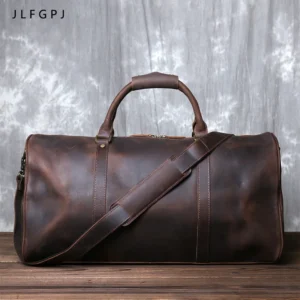Understanding Bag Durability Fundamentals
When shopping for a new bag, durability should be at the top of your priority list. But what exactly makes a bag durable? Durability encompasses several key factors: resistance to daily wear and tear, the ability to maintain structural integrity over time, and overall longevity.
The durability of any bag depends on multiple elements:
- Material quality – The fundamental starting point
- Construction techniques – How the bag is put together
- Hardware components – Zippers, buckles, and clasps
- Usage patterns – How and where you use your bag
- Maintenance habits – How well you care for your investment
While many people focus solely on materials when considering durability, the reality is more nuanced. A bag made from premium materials but poorly constructed won’t stand the test of time, while even moderately priced materials with excellent craftsmanship can last for years.
Different usage scenarios also demand different types of durability. A daily commuter bag faces different challenges than a weekend travel bag or an outdoor adventure pack. Understanding these distinctions helps in making the right choice between leather versus canvas messenger bags and other bag styles.
Leather Bags: The Durability Profile
Leather has been the material of choice for durable goods for thousands of years, and for good reason. Its natural properties create an inherently tough material that can withstand significant stress and strain.
Natural Strength Properties
The durability of leather comes from its organic structure. Made up of tightly intertwined collagen fibers, leather possesses remarkable tensile strength. This means it can stretch without tearing and return to its original shape, a property particularly valuable in bags that carry heavy or irregular items.
Aging Characteristics
One of leather’s most prized qualities is how it ages. Unlike many materials that simply wear out, quality leather develops a patina—a desirable sheen and character that makes the bag look better with age. This transformation isn’t just aesthetic; it represents the leather adapting to use while maintaining structural integrity.
Well-maintained leather bags can last anywhere from 10 to 30 years, with many becoming family heirlooms. The natural oils in leather help it resist cracking and maintain flexibility when properly cared for. High-quality leather bags can withstand over 20,000 flexes before showing signs of wear, significantly outperforming many synthetic alternatives.
Historical use of leather in military equipment, equestrian gear, and industrial applications further testifies to its exceptional durability under demanding conditions. This same resilience translates to everyday bags, making leather an outstanding choice for those seeking longevity in their accessories.
The differences between types of leather significantly impact durability, with vegan leather and real leather showing different durability profiles in long-term use.
Types of Leather and Their Durability Rankings
Not all leather is created equal. Understanding the different types can help you make an informed decision about which offers the best durability for your needs.
Full-Grain Leather
Full-grain leather represents the pinnacle of leather quality and durability. It’s made from the top layer of the hide with the natural grain intact, preserving the strongest fibers. Nothing is removed or altered in the processing, maintaining the hide’s natural strength and character.
This type of leather is highly resistant to moisture, abrasion, and flexing stress. With proper care, full-grain leather bags can easily last for decades, developing a beautiful patina that enhances their appearance over time.
Top-Grain Leather
A step down from full-grain, top-grain leather has had the uppermost portion of the hide sanded away to remove imperfections. While this creates a more uniform appearance, it removes some of the strongest fibers, resulting in slightly reduced durability.
Nevertheless, top-grain leather remains quite durable, offering a good balance between appearance and longevity. It’s more resistant to staining than full-grain but won’t develop quite the same rich patina.
Genuine Leather
Despite its official-sounding name, “genuine leather” actually indicates a lower quality product. It’s made from the layers of hide remaining after the top portions have been removed for better grades of leather. The result is a material with significantly reduced durability that’s more prone to cracking and wear.
Bonded Leather
Bonded leather is essentially the “particle board” of leather products. Made from leather scraps and fibers bonded together with adhesives, it offers minimal durability. These bags typically begin to peel, crack, and deteriorate within 1-3 years of regular use.
| Leather Type | Durability Rating (1-5) | Expected Lifespan | Price Range |
|---|---|---|---|
| Full-Grain | 5 | 15-30+ years | $$$-$$$$$ |
| Top-Grain | 4 | 10-20 years | $$-$$$$ |
| Genuine | 2.5 | 3-5 years | $-$$ |
| Bonded | 1 | 1-3 years | $ |
Understanding the differences between full-grain vs top-grain leather can help you make a more informed decision when investing in a durable leather bag.
Our collection of full-grain messenger bags showcases the durability advantages of premium leather construction.
Caring for Leather Bags: Extending Their Lifespan
Even the highest quality leather requires proper maintenance to reach its maximum lifespan potential. With routine care, you can dramatically extend how long your leather bag remains beautiful and functional.
Essential Cleaning Practices
- Regular dusting – Use a soft cloth to remove surface dust weekly
- Prompt spot cleaning – Address spills immediately with a slightly damp cloth
- Deep cleaning – Apply a leather-specific cleaner 2-4 times per year
- Drying correctly – Always allow leather to air dry naturally, away from heat sources
Conditioning Requirements
Leather needs to maintain its natural oils to prevent cracking and maintain flexibility. Apply a quality leather conditioner every 3-6 months, or more frequently in dry climates. Look for products containing natural ingredients like beeswax, lanolin, or neatsfoot oil.
Protection Strategies
Apply a leather protector spray to create a barrier against moisture and stains. This is particularly important for bags used in variable weather conditions. Reapply every few months for consistent protection.
Proper storage is equally important—keep leather bags stuffed with tissue paper to maintain shape, stored in dust bags, and placed in a cool, dry environment away from direct sunlight. Never store leather in plastic bags, which can trap moisture and lead to mildew.
The maintenance approaches for different materials vary significantly, as detailed in our canvas vs leather bags comparison guide.
Canvas Bags: The Durability Profile
Canvas has earned its reputation as an exceptionally tough material through centuries of use in demanding applications. Originally developed for ship sails, military tents, and workers’ clothing, canvas brings this heritage of durability to modern bags.
Structural Strength
Canvas derives its impressive strength from its tightly woven structure. Traditionally made from cotton, hemp, or linen (and now sometimes including synthetic fibers), canvas features a plain weave construction where threads interlace in a simple over-under pattern. This creates a dense, stable fabric with exceptional tensile strength.
Quality canvas bags can withstand remarkable stress, with heavy-duty versions supporting hundreds of pounds without tearing. The material naturally resists punctures and abrasions, making it ideal for daily use in rough environments.
Aging Characteristics
Unlike leather’s developing patina, canvas tends to show wear differently. Canvas typically softens with use, becoming more pliable while maintaining structural integrity. While it may develop a weathered appearance—especially in lighter colors—this often adds character rather than indicating deterioration.
Well-made canvas bags typically last 5-15 years with proper care, with premium waxed canvas varieties potentially lasting even longer. Throughout history, canvas has proven its resilience in military applications, maritime use, and exploration equipment—all testaments to its exceptional durability.
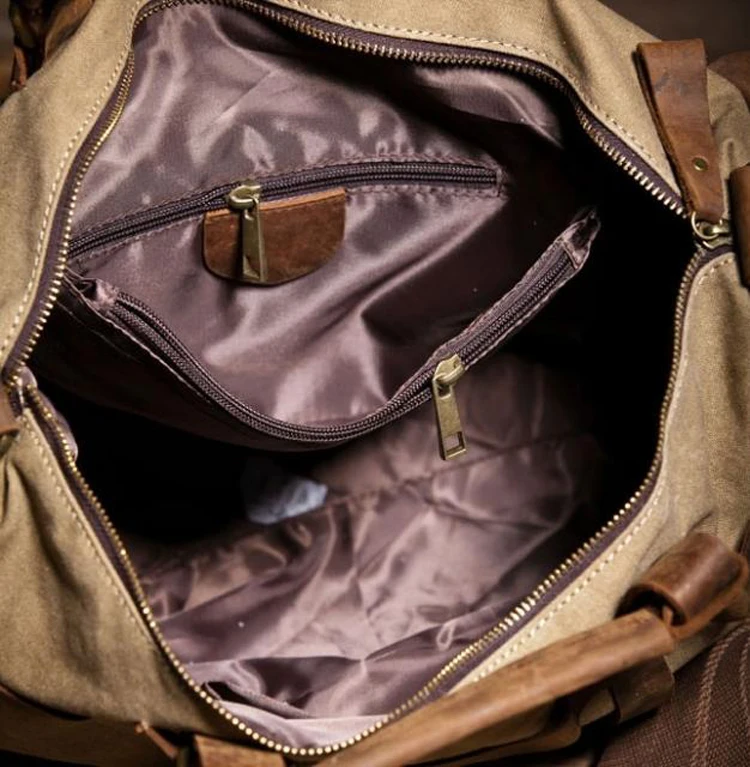
Our canvas leather messenger bag collection combines the durability advantages of both materials for exceptional longevity.
Types of Canvas and Their Durability Rankings
Canvas comes in several varieties, each with unique durability characteristics worth understanding before making a purchase.
Duck Canvas
Duck canvas (from the Dutch word “doek” meaning cloth) is one of the most durable canvas types available. Its exceptionally tight weave creates a smooth, firm surface highly resistant to tearing and abrasion. Duck canvas is rated by weight (typically 8-18 oz), with heavier weights offering greater durability.
Waxed Canvas
Waxed canvas represents one of the oldest waterproof fabrics, created by applying wax (traditionally beeswax or paraffin) to cotton canvas. The wax treatment not only provides excellent water resistance but also enhances overall durability by adding stiffness and abrasion resistance.
This material develops a distinctive patina with use, with creases and wear patterns that tell the story of the bag’s journey. Properly maintained waxed canvas can last 10+ years even with heavy use.
Standard Cotton Canvas
Untreated cotton canvas offers good basic durability but lacks the specialized performance characteristics of duck or waxed varieties. It’s more susceptible to water damage and staining but still provides reasonable durability for everyday use.
Synthetic Blend Canvas
Modern canvas often incorporates synthetic fibers like polyester or nylon alongside natural fibers. These blends can enhance strength, reduce weight, and improve water resistance. They typically offer excellent tear resistance but may not develop the same desirable aging characteristics as pure cotton canvas.
| Canvas Type | Durability Rating (1-5) | Water Resistance | Weight (oz) |
|---|---|---|---|
| Duck | 4.5 | Moderate | 10-18 |
| Waxed | 4.5 | Excellent | 10-15 |
| Standard | 3 | Poor | 8-12 |
| Synthetic | 4 | Good | 6-14 |
When making your selection, our comprehensive leather vs canvas comparison can help you determine which material better suits your specific needs.
Caring for Canvas Bags: Maximizing Longevity
Canvas bags require different maintenance approaches than leather, but proper care is equally important for maximizing lifespan.
Cleaning Methods
For regular maintenance, brush off loose dirt with a soft brush or cloth. For deeper cleaning:
- Spot clean stains immediately with mild soap and cool water
- For machine-washable canvas, use gentle cycle with cold water and mild detergent
- Always air dry completely before storing
- Never use bleach or harsh chemicals, which can weaken fibers
Waxed Canvas Maintenance
Waxed canvas requires special attention to maintain its water-resistant properties:
- Clean only with cold water and soft brush—never use soap or detergents
- Re-wax annually or when the surface begins looking dry
- Apply wax by gently rubbing in with a cloth, then heat with hairdryer to help it penetrate
- Wipe away excess wax and allow to cure for 24 hours
Common Issues and Solutions
Address fraying edges by sealing with clear nail polish or fabric glue. Reinforce worn corners with patches or leather trim. For water protection on standard canvas, apply a silicone-based fabric protector spray.
Store canvas bags in a cool, dry place away from direct sunlight, which can fade colors and weaken fibers. Never store canvas when damp, as this can lead to mildew growth.
Our vintage style messenger bag collection showcases how quality canvas develops character over years of use when properly maintained.
Head-to-Head Comparison: Leather vs. Canvas Durability Factors
When comparing leather and canvas directly, several key durability factors come into play that affect performance in different conditions and use cases.
Abrasion Resistance
Leather and canvas handle abrasion differently. Full-grain leather has excellent natural resistance to scuffs and scrapes, with the ability to heal minor abrasions through conditioning. Canvas, especially in heavier weights, offers comparable abrasion resistance but shows wear differently—often with visible fraying at stress points rather than the subtle marks leather develops.
Water Resistance
Properly treated leather (with appropriate waterproofing) can repel light moisture but remains vulnerable to prolonged exposure, which can lead to staining or warping. Waxed canvas, by contrast, offers superior natural water resistance, with water typically beading on the surface rather than absorbing. Standard canvas performs poorly against water without additional treatment.
Structural Integrity
Leather maintains its shape well over time, providing structured support even after years of use. Canvas typically begins with more rigidity but tends to soften and conform with use, potentially leading to sagging when carrying heavy items over time.
Aging Characteristics
Perhaps the most subjective difference lies in how these materials age. Leather develops a rich patina that many users find increasingly attractive, with colors deepening and surface character emerging. Canvas tends to fade, soften, and develop a worn-in look that appeals to those preferring a casual, vintage aesthetic.
| Durability Factor | Leather | Canvas |
|---|---|---|
| Abrasion Resistance | 4.5/5 | 4/5 |
| Water Resistance | 3/5 (5/5 when treated) | 2.5/5 (5/5 for waxed) |
| Tear Resistance | 5/5 | 3.5/5 |
| Weight Bearing | 4.5/5 | 3.5/5 |
| UV Resistance | 3/5 | 2/5 |
| Aging Appeal | Develops patina | Develops worn-in character |
Understanding the leather canvas weight differences helps explain why certain bags feel more substantial and how this affects long-term performance.
For professional settings requiring maximum durability, our durable leather bags for daily use showcase options designed to withstand years of business environments.
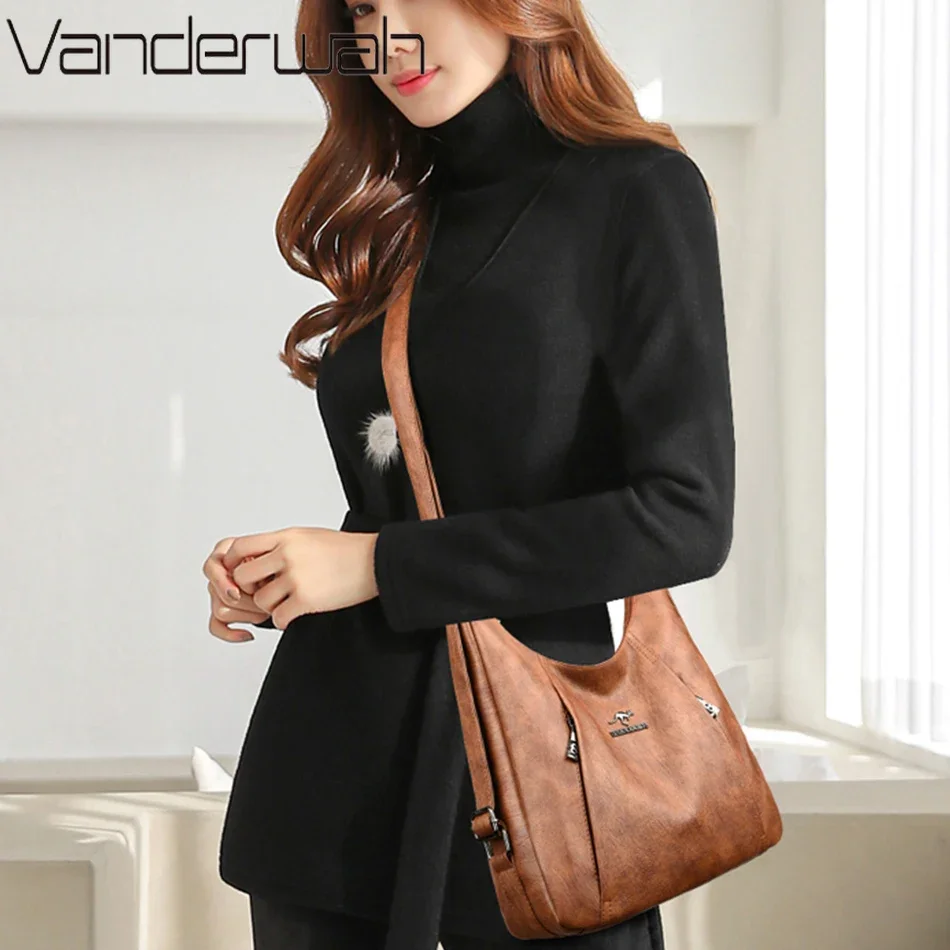
Which Material Is Best For Your Specific Use Case?
The ideal material for your bag depends largely on how and where you plan to use it. Consider these common scenarios when making your choice:
Daily Commuting
For urban commuters using public transportation, leather offers professional appearance with excellent durability against the friction of daily use. However, in rainy climates, waxed canvas provides superior protection without requiring additional waterproofing maintenance.
Bike commuters typically benefit from canvas options, particularly waxed varieties, which better withstand weather exposure and casual handling. The slightly lighter weight of canvas also makes for a more comfortable carrying experience during active commuting.
Travel Considerations
Frequent travelers should consider their destinations carefully. Leather provides elegant durability for business travel and upscale destinations but requires more protection from varied weather conditions. Canvas excels for adventure travel, offering more flexibility in packing odd-shaped items and greater resistance to rough handling by baggage systems.
Professional Environments
For business settings, full-grain leather projects professionalism while providing outstanding longevity. The ability to maintain a structured appearance even after years of use makes leather particularly valuable for client-facing roles. Canvas, even premium varieties, generally presents a more casual aesthetic that may not suit formal corporate environments.
Heavy-Duty Applications
When maximum durability is the primary concern—such as for tools, equipment, or outdoor adventures—heavy duck canvas or waxed canvas often outperforms leather in pure resilience. These materials better absorb intense stress without showing damage and can be more easily repaired in the field if necessary.
Leather Laptop Work Tote, Tan Leather Work Tote, Women's Leather Work Tote, Zippered Leather Work Tote
Price range: $223.62 through $237.97 Select options This product has multiple variants. The options may be chosen on the product pageCanvas & Leather Messenger Bag, Leather Commuter Tote
$80.41 Select options This product has multiple variants. The options may be chosen on the product pageCrazy Horse Leather Satchel, Men's Leather Satchel, Men's Professional Leather Messenger, Vintage Style Messenger Bag
$132.70 Select options This product has multiple variants. The options may be chosen on the product pageBrown Leather Messenger Bag, Men's Leather Satchel, Men's Professional Leather Messenger
$118.87 Select options This product has multiple variants. The options may be chosen on the product pageBlack Leather Messenger Bag, Black Leather Work Tote, Faux Leather Work Tote
$101.88 Select options This product has multiple variants. The options may be chosen on the product pageCrazy Horse Leather Satchel, Full Grain Messenger Bag, Men's Leather Satchel
$430.41 Select options This product has multiple variants. The options may be chosen on the product page
Our leather laptop work tote collection offers professional options designed specifically for business environments where both durability and appearance matter.
Beyond Material: Construction Elements That Impact Bag Durability
While material choice significantly influences durability, construction quality often determines whether a bag reaches its full potential lifespan.
Stitching Quality
The stitching is quite literally what holds your bag together. Look for these hallmarks of quality:
- Dense, even stitches (8-10 per inch for optimal strength)
- Reinforced stitching at stress points
- Double or triple needle construction on load-bearing seams
- Bound edges to prevent fraying and unraveling
Hardware Considerations
Metal hardware often fails before the bag material itself. Quality indicators include:
- Solid brass or stainless steel components rather than plated metals
- Reinforced attachment points where hardware connects to fabric or leather
- Smooth-functioning zippers with sturdy teeth and pulls
- Buckles and clasps that close securely without catching
Strategic Reinforcement
Examine how the manufacturer has addressed high-stress areas:
- Rivets or bar tacking at strap attachment points
- Reinforced corners where wear occurs first
- Additional material layers at the bottom of the bag
- Gussets that distribute weight evenly
Interior Construction
The unseen interior construction significantly impacts longevity:
- Quality lining material that resists tearing
- Interior pockets securely attached to prevent pulling away
- Finished seams that won’t fray with use
- Supportive structure that maintains the bag’s shape under load
Understanding these construction differences is essential when comparing canvas vs leather messenger bags, as they often determine whether a bag will last for years or decades.
Value Proposition: Cost vs. Longevity Analysis
When evaluating the true value of a leather or canvas bag, looking beyond the initial price tag provides a more accurate picture of your investment.
Initial Investment Comparison
Quality full-grain leather bags typically range from $200-$500+, representing a significant upfront investment. Premium canvas options generally cost between $100-$300, creating a notable initial price difference.
Long-Term Value Calculation
Consider this simplified cost analysis for a daily-use work bag:
Full-grain leather briefcase:
* Initial cost: $350
* Expected lifespan with proper care: 20 years
* Annual maintenance cost: ~$15 (conditioner, protectant)
* Cost per year: $22.75
Premium waxed canvas messenger:
* Initial cost: $180
* Expected lifespan with proper care: 10 years
* Annual maintenance cost: ~$10 (re-waxing supplies)
* Cost per year: $28
Despite the higher initial investment, the leather bag actually provides better long-term value in this scenario. Additionally, leather bags typically retain resale value better than canvas alternatives, further enhancing their financial proposition.
Repair Considerations
Repair capabilities also factor into long-term value. Quality leather can be patched, restitched, and refurbished by skilled craftspeople, potentially extending lifespan indefinitely. Canvas repairs tend to be more visible and may affect structural integrity, often making replacement more practical than extensive repair after significant damage.
Frequently Asked Questions About Leather and Canvas Durability
How does climate affect the durability of leather vs. canvas bags?
Humid environments can cause leather to mold if not properly treated, while extreme dry conditions may lead to cracking without regular conditioning. Canvas generally handles humidity better but can be prone to mildew if stored damp. In very hot climates, leather may dry out faster and require more frequent conditioning, while canvas is more susceptible to UV damage and fading.
Can a damaged canvas or leather bag be repaired effectively?
Leather bags can be professionally restored even after significant damage. Tears can be stitched, color can be refreshed, and even worn corners can be rebuilt. Canvas repairs are more challenging—small tears can be patched, but extensive damage often remains visible. Waxed canvas repairs tend to be more successful than repairs to standard canvas.
Which material is more resistant to color fading over time?
Leather typically maintains its color better over time, especially darker shades and naturally tanned leathers. Canvas is more susceptible to fading, particularly when regularly exposed to sunlight. Synthetic-blend canvas generally retains color better than pure cotton varieties.
Is genuine leather actually durable despite its lower price point?
Despite the name, genuine leather represents a lower quality grade with significantly reduced durability compared to full-grain or top-grain leather. While it may last 3-5 years with careful use, it’s prone to cracking and surface wear. The modest price difference between genuine and top-grain leather often makes the upgrade worthwhile for longevity.
How can I tell if a canvas bag will be durable before purchasing?
Look for canvas weight (ideally 12oz or higher), tight, even weaving, and reinforced stress points. Quality canvas bags feature bound edges, double-stitched seams, and often incorporate leather at wear points. For waxed canvas, check for even wax distribution and water beading on the surface.
Our leather messenger bags collection demonstrates these quality indicators that signal exceptional durability potential.
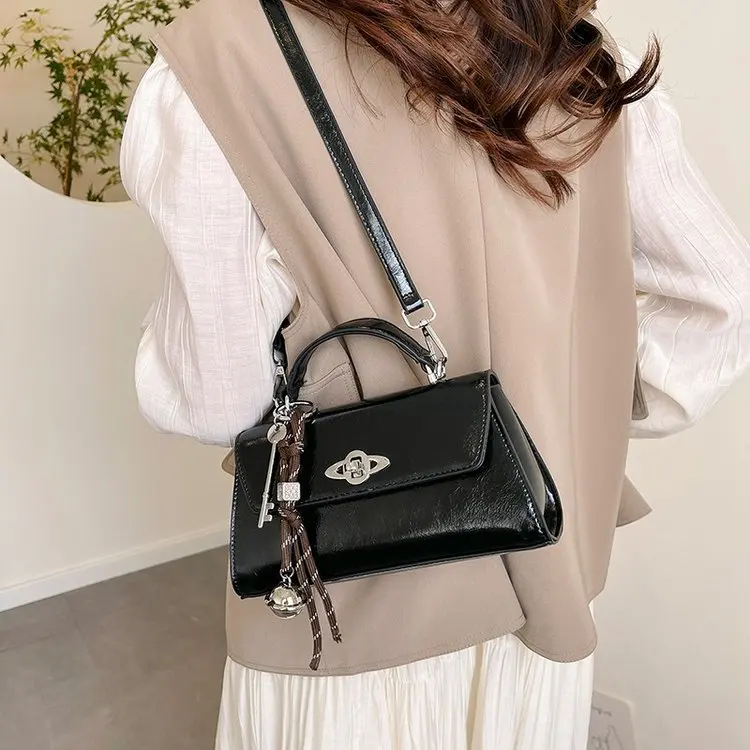
Making Your Final Decision: A Material Selection Framework
After comparing all aspects of leather and canvas durability, use this framework to guide your final decision:
Priority Assessment Checklist
- Usage intensity – How frequently will you use the bag and in what conditions?
- Weather exposure – Will the bag regularly face rain, snow, or intense sun?
- Aesthetic preferences – Do you prefer the developing patina of leather or the casual character of canvas?
- Maintenance commitment – How much time are you willing to invest in care routines?
- Budget considerations – Are you focused on initial cost or lifetime value?
- Environmental factors – What climate conditions will the bag primarily experience?
- Weight sensitivity – Is the weight of the bag a significant concern for your use case?
Both leather and canvas can deliver exceptional durability when you select quality materials, thoughtful construction, and commit to appropriate maintenance routines. The “better” choice ultimately depends on your specific needs, preferences, and circumstances.
Remember that construction quality transcends material choice—a well-made canvas bag will outlast a poorly constructed leather one, and vice versa. At Poise Porter, we believe in offering premium options in both materials, ensuring durability regardless of your material preference.
By understanding the unique properties, strengths, and limitations of both leather and canvas, you can make an informed decision that provides the perfect balance of durability, functionality, and style for your specific needs.

